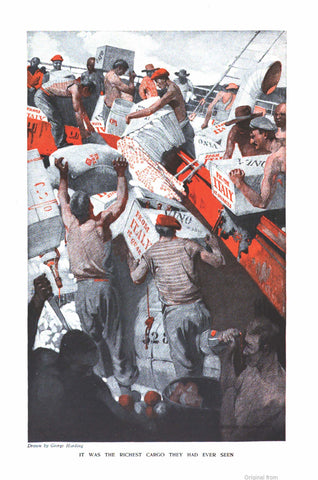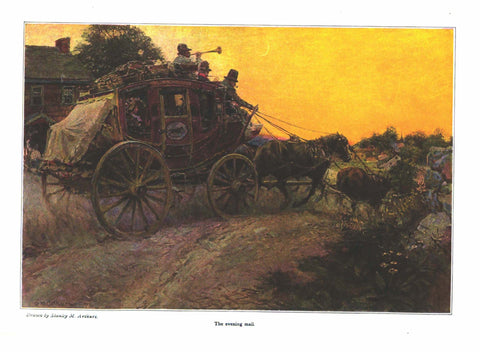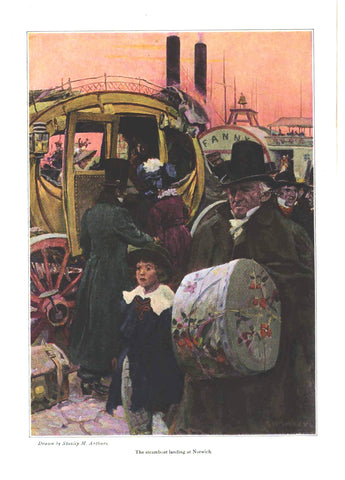Henry Soulen Story Illustration for The Ladies Home Journal (June 1924): a beautifully framed antique
$265.00
By Henry J. Soulen
IMAGE INFORMATION
Image Size: H 14.00” x W 11.00”
Matted & Framed: H 20.00” x W 17.00”
Framed Price: $300.00
Packaging and shipping approximately $25.00
The artist created this lovely illustration toward the end of his early period, which extended from approximately 1911 to 1926.
During this period his style evolved out of the so-called Brandywine School method he learned from Howard Pyle and his brilliant protégés into an impressionistic method of pictorial storytelling. In this latter form, HJS endeavored to reproduce the emotional moment the author had created in his/her words is a stylized visual composition made dream-like with color selection and brushwork.
HJS’s picture lures the viewer into an imaginary place which is at the same time recognizable and unknown. He accomplishes this magical effect by using cool muted colors which he places to suggest a natural setting rather than to represent it. After all, who has ever been to Bavania, which is where Ms. Willson’s story takes place. (She describes it as “one of those little pink places on the map of . . .”
Tom Longden of the Des Moines Registers tells us this about the author:
She grew up in Mason City, but "I had to be where the world was moving," she said.
Dixie Lucile Reiniger Willson was the daughter of John and Rosalie Willson. Her younger brothers were Cedric and Meredith, who became "The Music Man."
At one time Dixie and Meredith were equally famous.
Willson turned out her first short story in her early teens as a birthday present for her mother, then submitted it to a Chicago newspaper, which published it. Later she entered an advertising contest sponsored by an underwear company and won $25.
After high school graduation, Willson took a pioneering kindergarten course at Iowa State Teachers College, graduating in 1910, and taught at Independence as well as in Montana.
After a short-lived first marriage in 1915 and a move to Wisconsin, she landed in Chicago.
By 1918, she was in New York, working in vaudeville and as a Ziegfeld Follies chorus girl.
She launched her writing career, worked for Fox films and dreamed of becoming a theatrical producer.
From 1920 to 1922, Willson performed as an elephant rider in the Ringling Bros. circus. She turned her experiences into two books, "Clown Town" and "The Circus ABC." [Online at: https://data.desmoinesregister.com/famous-iowans/dixie-willson.]
Dixie’s writing career began in the early 1920s. She published several stories in The Delineator, a competitor of The Ladies’ Home Journal, before the LHJ published “Kings and Things.” The LHJ’s legendary editor, Edward W. Bok had retired five years before. His successor, Barton Currie, decided to print the piece, and would have assigned HJS to illustrate it. This was a smart move on Curries part since Soulen had a special talent for depicting faraway places. But even with HJS’s special treatment, a relationship between Dixie Willson and The Ladies’ Home Journal failed to develop. Currie ran one more of her stories (Cross-Eyed Captain appeared in its November 1925 issue), but she never appeared in the magazine after that. Still, her career continued to flourish for another decade then the Depression began to undermine interest in her eclectic adventures. After separating from her husband of fourteen years, she settled in Fair Haven, New Jersey, where she spent the last fifteen years of her life. She died in 1974. Her remains are buried in the her family’s plot in Mason City's Elmwood Cemetery
Dixie Willson survived Henry Soulen by eight years. It seems that in the final forty years of his life, he never illustrated another of her works.








